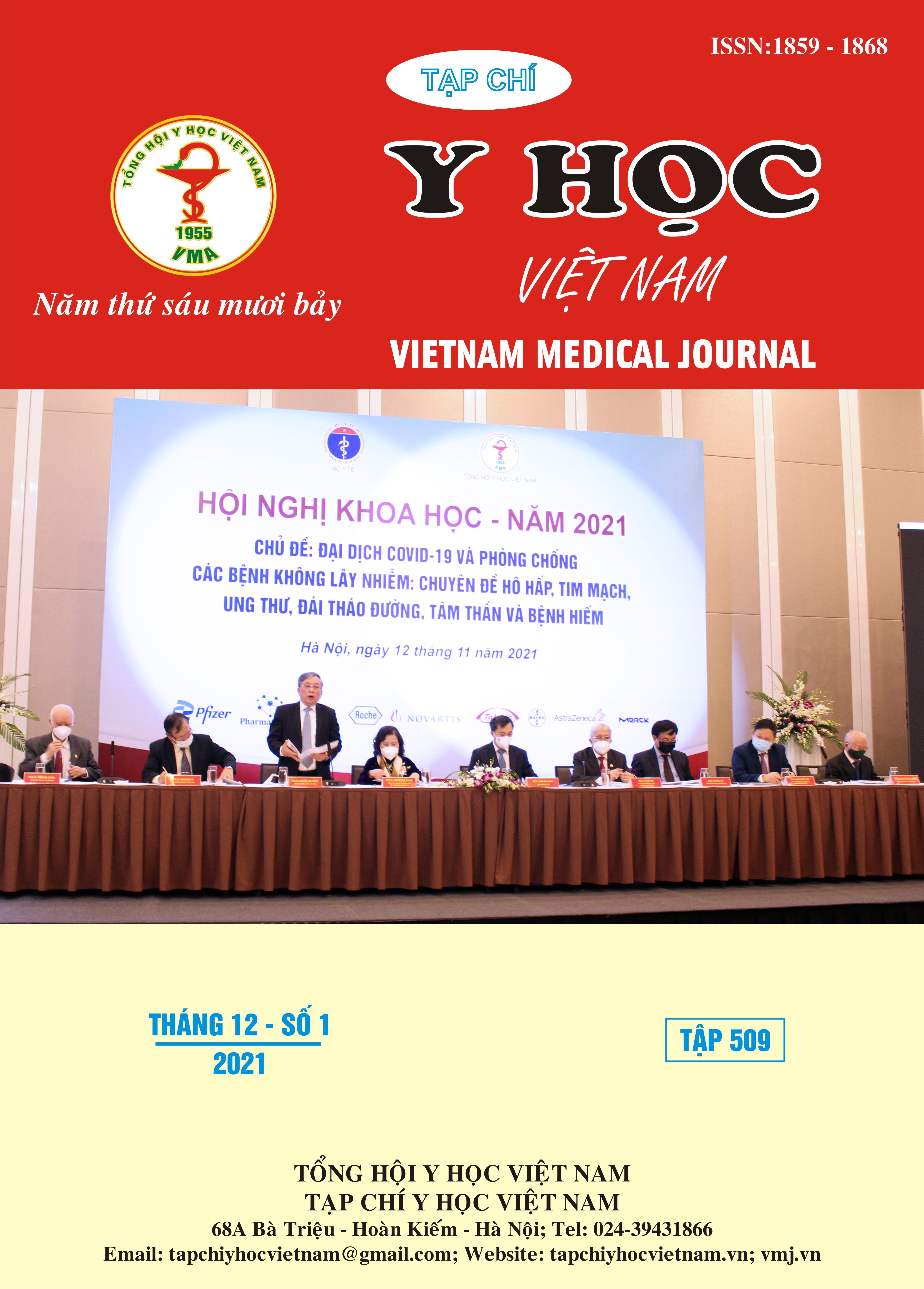THE REAL SITUATION OF ANTIBIOTIC USE FOR INPATIENTS OF YEN DUNG MEDICAL CENTER, BAC GIANG PROVINCE IN 2020
Main Article Content
Abstract
Objective: To describe the real situation of antibiotic use for inpatients of Yen Dung Medical Center, Bac Giang province in 2020. Methods: This is a cross –sectional study. Data was collected from two sources: 1-medicine management software; 2- reviewing 300 medical records that were randomly withdrawed from all medical records of inpatients in Yen Dung Medical Center during the time between 01/01/2020 and 31/12/2020. Key indicators of the study: Quantity of antibiotics used in the year (calculated in DDD); classification of antibiotics according to chemical structure; number of days of antibiotic use; rate of medical records with antibiotic combination; outcomes of antibiotic treatment. Main findings: Domestic antibiotics account for 54,54% (based on DDD indicator); the antibiotic group that has been used the most is beta-lactam (81,68%); 65,33% medical reports having one kind of antibiotics; 30.33% of the medical records were prescribed with 2 types of antibiotics; there is a small percentage (4.33%) of the medical records combined 3 types of antibiotics; 54,33% of medical reports that were prescribed antibiotics during 5-7 days; the rate of medical reports that were prescribed antibiotics during 7-10 days is 43,33%; it is particularly noteworthy that 2.34% of patients had to be treated with antibiotics for more than 10 days (mostly in the surgical ward of the hospital). Conclusions: In general, Yen Dung Medical Center has well complied with the Ministry of Health's recommendations on the use of antibiotics including the indicators related to quantity; type and duration of antibiotic use. However, there are still some issues that need to be improved, including: the rate of domestic antibiotics that have been used in Yen Dung Medical Center is lower than Ministry of Health’s recommended index (54.54% compared to MOH's recommendation of 75%); there is a small percentage (4.33%) of the medical records combined 3 types of antibiotics; it is particularly noteworthy 2,34% of medical reports that were prescribed a long-term antibiotic therapy (over 10 days – mostly in the surgical ward of the hospital).
Article Details
Keywords
Antibiotic using, Inpatient treatment
References
2. Bộ Y tế, Hướng dẫn sử dụng kháng sinh, 2015.
3. Bộ Y tế, Đề án “Người Việt Nam ưu tiên dùng thuốc Việt Nam”, 2012.
4. Dung Hoàng Thị Kim, Phân tích thực trạng sử dụng kháng sinh tại bệnh viện C tỉnh Thái Nguyên năm 2014, Luận văn thạc sỹ Dược học, Đại học Dược Hà Nội, 2014.
5. Hùng Nguyễn Việt, Phân tích thực trạng tiêu thụ kháng sinh và việc sử dụng kháng sinh trong điều trị viêm phổi bệnh viện tại bệnh viện Đa khoa tỉnh Điện Biên, Luận văn thạc sỹ Dược học, Trường Đại học Dược Hà Nội, 2019.
6. Khánh Hoàng Thị, Phân tích thực trạng sử dụng kháng sinh tại bệnh viện chấn thương - chỉnh hình Nghệ An năm 2016, Luận văn Dược sỹ chuyên khoa cấp II, Trường Đại học Dược Hà Nội, 2018.
7. Thu Nguyễn Thị Minh, Khảo sát thực trạng tiêu thụ kháng sinh và cơ cấu kháng sinh điều trị nội trú tại bệnh viện Kiến An, thành phố Hải Phòng năm 2019, Luận văn tốt nghiệp Dược sỹ đại học, Học viện Y Dược học cổ truyền Việt Nam, 2020.
8. World Health Organization, Cảnh báo tình trạng kháng kháng sinh ở Việt Nam, http://www.medinet.hochiminhcity.gov.vn/quan-ly-duoc-my-pham/who-canh-bao-tinh-trang-khang-khang-sinh-o-viet-nam-cmobile4513-35717.aspx, 2020, truy cập ngày 18/10/2021.


